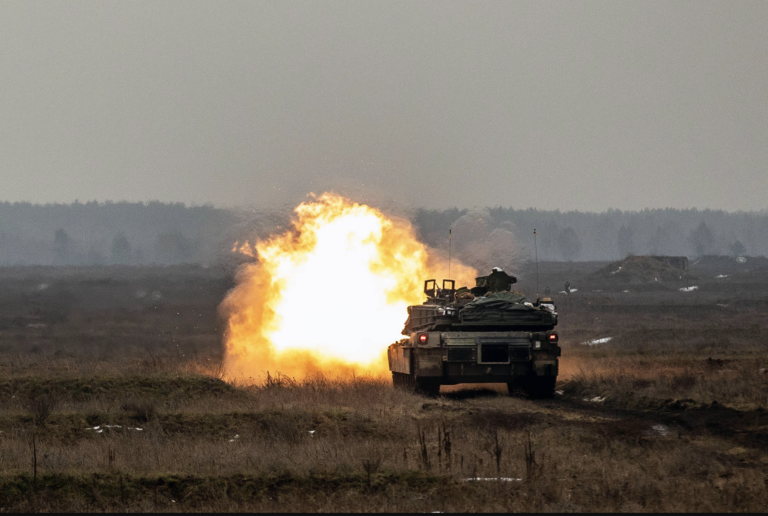As attendees prepare to support the US Army's Multi-Domain Operation (MDO) vision for 2035 at TSIS 2024, the scale of the Army's vision should not eclipse strategic opportunities to advance the quality and accessibility of data-enriched training environments at the individual level. While the Army faces many competing priorities to develop new equipment, concepts, and doctrine, it will continue prioritizing the most decisive system in its inventory—its people. Specifically, the US Army's current modernization and people strategies address leader development as an essential requirement that will continue to rely on cutting-edge technological research and development. In both documents, leader development represents a continuum of training and education that begins at initial entry and compounds throughout a soldier's career.
At the 2023 AUSA conference, Chief of Staff of the Army, General Randy A. George, reinforced his focus on building adaptive leaders. He also highlighted how technology needs to help units train in realistic battlefield environments while reducing training costs. He went on to reinforce:
"The world and warfare are changing rapidly. We will stay ahead of our adversaries. And so, continuous transformation means iteratively adapting and evolving how we fight, how we organize, how we train, and how we equip."
Two key opportunities within the training and simulation arena will help the Army achieve its goals through technology that targets individual soldier development. First, the Army needs to harness the power of people analytics to enhance training and education opportunities for each soldier. Second, it must improve the accessibility and utility of top-tier training environments at the individual level.
Investing in data technology for people and the organization
The US Army continues to gain significant momentum in integrating technology across its human capital enterprise. The Army can see and understand its human potential better than ever through advances in people analytics, innovative modeling, machine learning applications, operational psychology, and behavioral science. The resulting body of data from these efforts already empowers a culture of development and assessment that fosters self-awareness and self-improvement. While the Army must uphold imperatives for the ethical use and safeguarding of individual data, opportunities abound across individual and anonymized data. As capability grows, any increase in data collection from an individual should increasingly benefit the individual. This effort is underway but will benefit from continued assistance across DOD, academia, and industry to build capacity.
Two recent examples demonstrate that the Army is committed to using data for the soldier's benefit. First, the US Army Command Assessment Program improves its feedback interpretation and delivery mechanisms with each iteration—all to increase a candidate's self-development potential based on their assessment data. Second, the 4th Infantry Division recently implemented a predictive analysis tool designed by a battalion commander that uses the division's internal database of significant activities to provide a rolling risk indicator warning to battalion and company-level command teams.
In the future, unit training data, individual education data, and data derived from human analytics could provide applicable composite assessments. Those assessments could benefit the soldier by targeting curricula or development opportunities before enrollment in Professional Military Education (PME) based on a soldier's previous PME assessments. Composite approaches could also benefit the soldier by increasing the efficiency of the individual's unit training and professional development programs if commanders prioritize training based on fused interpretations of previous collective training assessments.
High-powered training tools in every soldier's hand, or at least in the next room
The US Army is committed to developing a comprehensive approach to distance learning, digital training environments, and self-study resources. This commitment extends to what the Army refers to as the 'distributed training and development arena', a virtual space where soldiers can access training materials, participate in simulations, and collaborate with their peers and instructors regardless of their physical location. However, the Army has yet to realize the full potential of this arena.
While the Army should continue investing in user-friendly interfaces, streamlined information gateways, and improved search capabilities, its primary focus should be removing every barrier to training and education resources that classification and bandwidth will allow. Every unit should have access to scalable live, virtual, constructive, and gaming (LVC-G) environments in their building or personal device. As the Army develops and fields its Synthetic Training Environment, it needs to consider what applications, architecture, or principles from that system can enhance the reach of training and education opportunities to the individual soldier.
Mission Training Centers and Virtual Battle Space facilities are excellent for collective training but require individual soldier skills working in concert. Units should have access to LVC-G training environments in their facilities that support those particular skills.
Considering the cutting-edge opportunities in technology development and the scale of effort required to meet the goals set for 2035, it is easy to get wrapped up in the large-scale requirements for high-intensity conflict in a multi-domain environment. These requirements include advanced weaponry, sophisticated communication systems, and highly trained personnel capable of operating in multiple domains simultaneously.
John "Casey" Welch is a retired US Army Lieutenant Colonel who last served as the Chief of Plans for the Command Assessment Program within the US Army Talent Management Task Force. As a former Infantry Battalion Commander and Brigade Senior Trainer at the Joint Multinational Readiness Center in Europe, he is committed to helping leaders across the joint and multinational spectrum realize their full talent potential and organizational agility.
